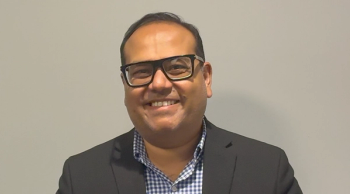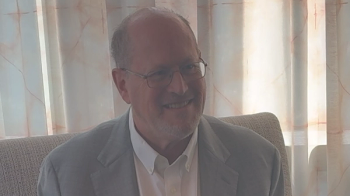
Does Vitamin D Have a Role in Cancer Prevention?
Cancer Network spoke with Dr. Michael Holick about the role of and effectiveness of vitamin D in cancer prevention.
Today we are discussing the role of vitamin D in cancer prevention with endocrinologist Michael F. Holick, PhD, MD. Holick specializes in vitamin D and through his research has identified calcidiol, the major circulating form of vitamin D, and calcitriol, the active form of vitamin D. He is a professor of medicine, physiology, and biophysics at the Boston University Medical Center where he is the director of the Heliotherapy, Light, and Skin Research Center.
-Interviewed by Anna Azvolinsky
Cancer Network: Why has there been a focus on vitamin D as a way to potentially prevent certain types of cancer? What are the potential preventive mechanisms?
Dr. Holick: Everyone knows vitamin D as the vitamin important for bone health and for preventing rickets in children, but we are now recognizing that the major source of vitamin D is coming from the sun, so by definition vitamin D is really a hormone. Once you make vitamin D in your skin, or ingest it from your diet, it goes to your liver, is converted to 25-hydroxy- vitamin D known as calcidiol and then to the kidneys to the active form, 1,25-dihydroxy-vitamind D, also known as calcitriol.
It turns out that, yes, vitamin D is very important in helping you use the calcium in your diet by increasing intestinal calcium absorption, and to help mineralize the skeleton to have healthy bones in both children and adults. But, we are now also recognizing that many cells in the body, separate from the kidneys, can activate vitamin D and there is mounting evidence that that function of vitamin D is to help regulate cellular growth. There are several studies that have related higher blood levels of 25-hydroxy-vitamin D and reduced-risk of many deadly cancers including colon, breast, and prostate cancer to name a few.
Cancer Network: What do we know about how much vitamin D we require for optimal health including reducing the risk of cancers?
Dr. Holick: That’s a very good question and obviously, there continues to be a lot of debate about this question. From my perspective, we should really ask the question ‘what were our hunter, gatherer forefathers doing?’ They were always exposed to sunlight. What were their likely levels? How much vitamin D would you require to attain those levels?
One of the insights was done several years ago where a study was performed in Maasai herders that live in Kenya at the equator. Even though they have extremely dark skin, Mother Nature still has the ability to make some vitamin D in their skin.
Their blood levels were measured and it was determined that their 25-hydroxy-vitamin D levels were around 40–50 nanograms per milliliter. To get to that level, adults would need to take 3,000–5,000 units of vitamin D per day.
The recommendation from the Endocrine Society practice guidelines is at least 1,500–2,000 units per day and if you are obese, you need two to three times more. I personally take 5,000 units of vitamin D every day and my blood level is in the range of 60 nanograms per milliliter. All of my patients are on between 3,000–5,000 units of vitamin D per day and they are all doing very well.
Cancer Network: Let’s start with colon cancer. There have been numerous epidemiological studies on the possible benefit of vitamin D in preventing colon cancer. What do individual studies and meta-analyses tell us about vitamin D and colon cancer risk?
Dr. Holick: There continues to be association data saying that the higher your 25-hydroxy-vitamin D levels are, the lower your risk for colorectal cancer.
The earliest study was done by the Garland brothers back in the 1990s when they were relating latitude and colon cancer and then did a prospective study on vitamin D status and the risk of colon cancer.
They concluded two things. The first is that the higher latitude that you live, the higher your risk for colorectal cancer. They also concluded that taking 1,000 units of vitamin D a day could potentially reduce your risk of colon cancer by as much as 50%. Other studies have suggested that improving your vitamin D status would have the benefit of reducing colorectal cancer by about 25%–50%, depending on the study.
Cancer Network: Is there evidence from studies that vitamin D can mitigate the risk of other tumor types?
Dr. Holick: The one that is most significant concerns breast cancer. There was a very nice study was done from the Nurses’ Health Study that showed that nurses that had, on average, blood levels of 48 nanograms per milliliter, so around 50 nanograms per milliliter-that would require you to take about 3,000–5,000 units of vitamin D per day-reduced their risk of developing breast cancer by about 50%.
There was also a very nice study done by Dr. Knight in Canada. She asked a question on the phone to women living in Canada who had breast cancer and asked the same number of women living in the same area who did not have breast cancer and concluded that women who had the most sun exposure as teenagers and young adults reduced the risk of developing breast cancer later in life by almost 70%. So, there is a reasonable amount of evidence to suggest that improvement in vitamin D status can help reduce the risk of breast cancer.
Cancer Network: Have there been randomized trials with vitamin D that focused on cancer prevention or slowing cancer progression?
Dr. Holick: There was a recent study that came out, known as the VITAL study. The authors concluded that 5 years on 2,000 IU’s of vitamin D per day that did not reduce the risk for developing colon cancer. But, they did find statistically significant 25% reduced risk of dying from colon cancer if patients took vitamin D.
When you look at that study carefully, most of the subjects were not vitamin D deficient. If they are vitamin D sufficient already, and getting some additional vitamin D, it is not clear that you would be able to see a significant benefit.
The senior author on the publication, Dr. JoAnn Manson, even made the conclusion that it is also true that these types of cancers probably take more than a few years to develop, so introducing vitamin D for 5 years may not be a long enough time to see benefits. That is all the more reason why I encourage my family and my patients that you should always be vigilant about your vitamin D status and take an adequate amount of vitamin D from birth until death.
Cancer Network: Are there currently ongoing human studies to better understand the potential role of vitamin D in cancer prevention?
Dr. Holick: There continue to be small studies that have concluded that there may or may not be any benefit. Again, you have to look at how these trials are designed and what their outcome measures are. I think it is still not clear that maintaining a blood level that we would consider to be in a healthy range for 25-hydroxy-vitamin D of 40–60 nanograms per milliliter as recommended by the Endocrine Society does have that additional health benefit of reducing risk of many deadly cancers. From my perspective, based on all of the information that I have reviewed, I think overall, the data is suggestive that it does help reduce the risk of deadly cancers.
Cancer Network: Thank you so much for joining us today Dr. Holick.
Dr. Holick: My pleasure.
Newsletter
Stay up to date on recent advances in the multidisciplinary approach to cancer.



















































































